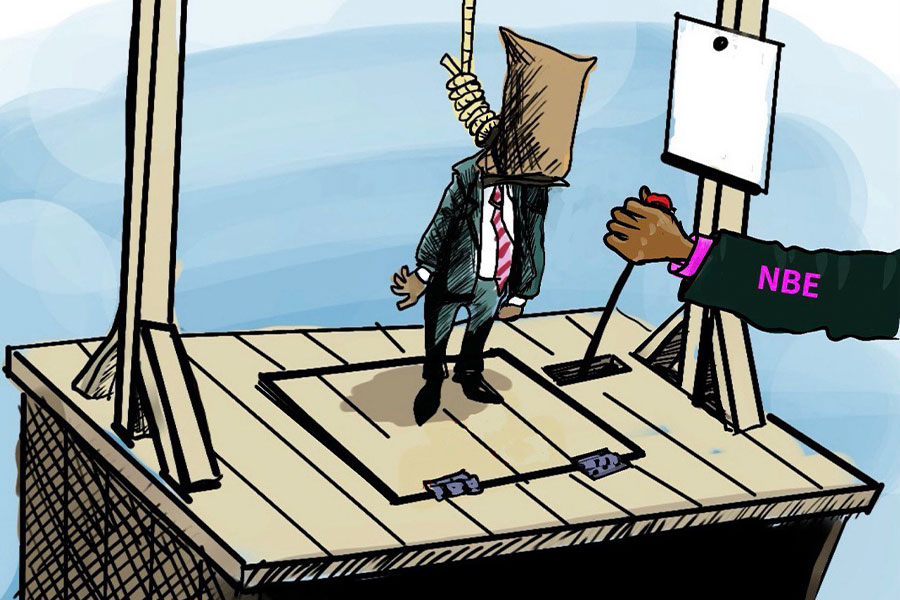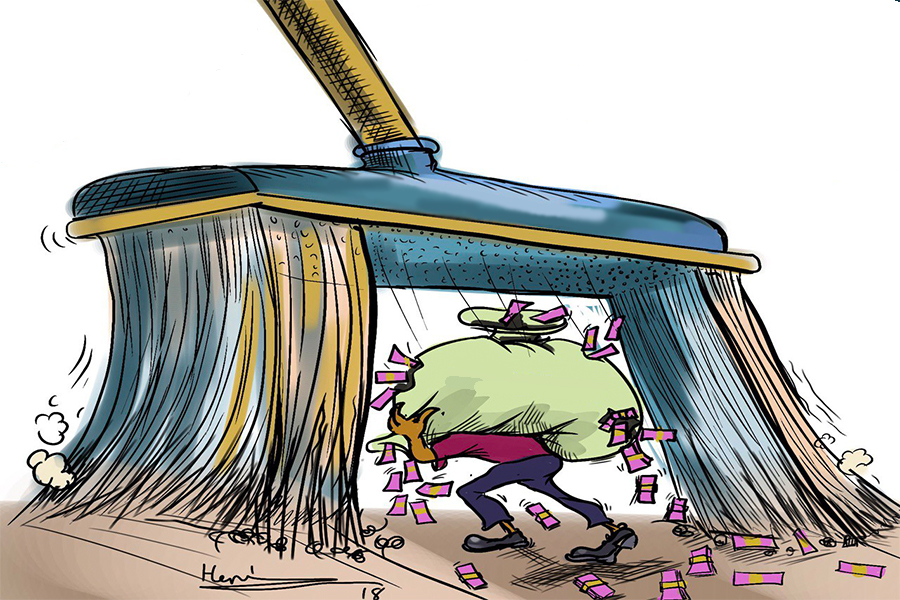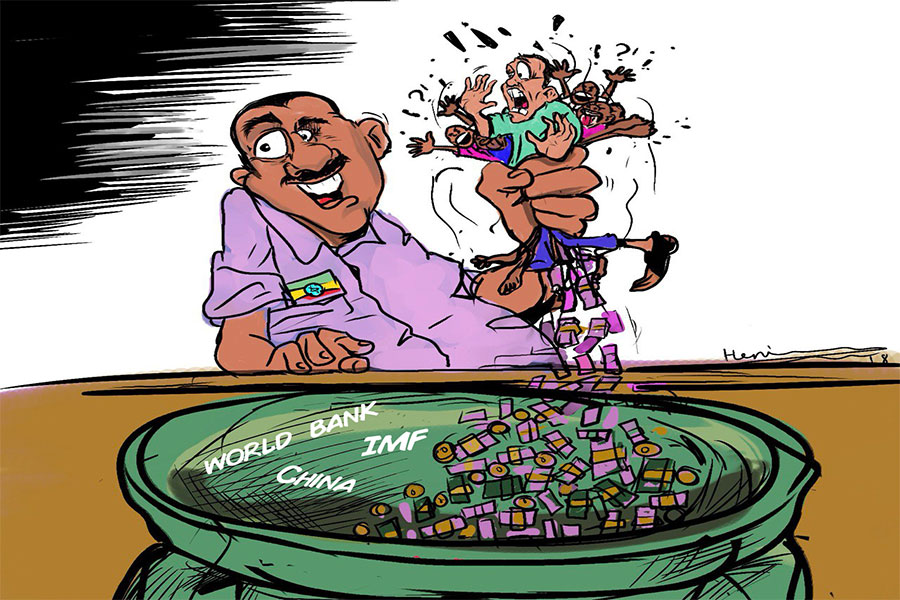
Photo Gallery | 180255 Views | May 06,2019
Oct 5 , 2025.
The Brewed Buck has been guided rather than left to wander, yet last week offered a textbook study in how quietly an exchange rate can slip when policymakers keep a firm hand on the wheel.
In that stretch, the 27 commercial banks, led by the state-owned Commercial Bank of Ethiopia (CBE) and overseen by the National Bank of Ethiopia (NBE), adjusted their posted dollar rates in near-unison, revealing more about official intentions than about market demand.
Twenty-five of the 27 banks left the spread locked at two percent, a line the regulators have long drawn to curb arbitrage. Only the Central Bank deviated, narrowing its margin to as low as 0.03pc and never wider than 0.38pc.
It was a week when the market looked calm on the surface, but every quote revealed the real action was happening elsewhere. The headline numbers unveiled that calm.
On September 29, the average buying rate was 141.66 Br to the dollar, and the selling rate was 144.47 Br. By October 4, those figures had edged to 142.12 Br and 144.87 Br. Over six days, the Brewed Buck weakened by roughly 0.33pc, hardly a jolt, yet a reminder that the Birr is not pegged but eased downward in small increments.
Behind the averages lay a choreography that bordered on the mechanical. Most banks moved in lockstep, adjusting by fractions to a crawl, avoiding a tumble.
The CBE, acting as a monetary policy arm, kept its buying rate near 140 Br, (not to mention the 10 Br top-up as a bonus for every dollar it buys) several steps below the industry average. CBE’s rate is less about market sentiment and more about policy priorities.
Oromia Bank, by contrast, sat at the top end, sometimes quoting more than three Birr above the average. The biggest swing in buying quotes came from the Central Bank, whose own bid climbed from 144.016 Br to 146.406 Br, a 2.39-Birr move, while CBE’s rose by a muted 0.50 Br.
Some banks barely budged. Sidama Bank left its board at 140.68 Br buying and 143.50 Br selling for days. Others made small and steady climbs. Nib Bank increased its buying rate incrementally, while the Bank of Abyssinia (BoA) and Lion Bank adjusted theirs by mere two-tenths of a Birr, revealing a blend of regulatory caution and internal risk rules.
The week’s average buying rate was 142.1 Br, and the selling rate was 144.8 Br. Volatility was barely visible; the standard deviation showed faint tremors, and daily changes in buying rates were 0.12pc on September 30, and 0.07pc, 0.03pc, 0.09pc and only 0.01pc on the subsequent four days.
Uniform spreads were no accident, as they come directly from rules designed to close the door on quick arbitrage. Only the Central Bank adjusted its margin, using the lever to signal a policy direction. The week’s highest buying quote, 145.0004 Br, came from the Central Bank, nearly six Birr above Global Bank’s low of 139.42.
Selling quotes echoed the pattern. Amhara Bank, the top seller, posted 147.9 Br; CBE stayed at 142.4 Br, making a 5.5-Br gap.
At the upper limit sit the Central Bank and Amhara Bank, signalling where rates could go if controls eased. A second tier, including Dashen, Abyssinia, Oromia, and Hibret, hugged below that ceiling, inching forward without sharp jumps. A third group, such as CBE, Awash, Wegagen, Zemen, and Global, anchored the low end, demonstrating either liquidity concerns or conservative risk appetites.
The Central Bank’s last foreign-currency auction took place on August 5, leaving the market with trading positions and expectations, rather than real flows. The tight quotes and disciplined spreads are signs of stasis rather than true stability.
Zooming out, the previous 10 weeks reinforced the picture. From late July to early October, the Brewed Buck slipped from about 132 Br to over 142 to the Green Buck, a 7.7pc fall, engineered in stops and starts.
During this period, the CBE averaged 135.15 Br, Oromia Bank averaged 139.18 Br, the Central Bank averaged 138.77 Br, and the broader market averaged 136.13 Br. Early on, the cheapest bids, below 132 Br, came from the CBE, Dashen and Tsehay.
The Central Bank’s own postings act as the clearest flag of official intent, rising nearly nine Birr in the last four weeks alone. Private banks, too, have crept toward the upper bound as the dollar becomes scarcer and compliance demands tighten.
Late in the week, Amhara Bank’s quotes finally matched those of the regulator, signalling that some lenders are ready to follow the policy signal when necessary.
The result is a managed glide rather than a freefall. The Brewed Buck is not being allowed to slide. It is being lowered, bit by bit, by the hands that hold it aloft. That method keeps volatility low but also masks the strain of dollar scarcity that businesses feel every day.
The closing snapshot of September 29 to October 4 captured a monetary policy regime bent on avoiding surprises. The Birr weakened, but so slowly that volatility metrics barely twitched. Stability rests on rules, not on supply and demand.
With auction windows shut, the real test will come when those guiding hands ease their grip. Until then, banks will continue to post their quotes, making the slightest of adjustments, and wait for the next cue.
PUBLISHED ON
Oct 05,2025 [ VOL
26 , NO
1327]

Photo Gallery | 180255 Views | May 06,2019

Photo Gallery | 170452 Views | Apr 26,2019

Photo Gallery | 161475 Views | Oct 06,2021

My Opinion | 137267 Views | Aug 14,2021

Nov 1 , 2025
The National Bank of Ethiopia (NBE) issued a statement two weeks ago that appeared to...

Oct 25 , 2025
The regulatory machinery is on overdrive. In only two years, no fewer than 35 new pro...

Oct 18 , 2025
The political establishment, notably the ruling party and its top brass, has become p...

Oct 11 , 2025
Ladislas Farago, a roving Associated Press (AP) correspondent, arrived in Ethiopia in...